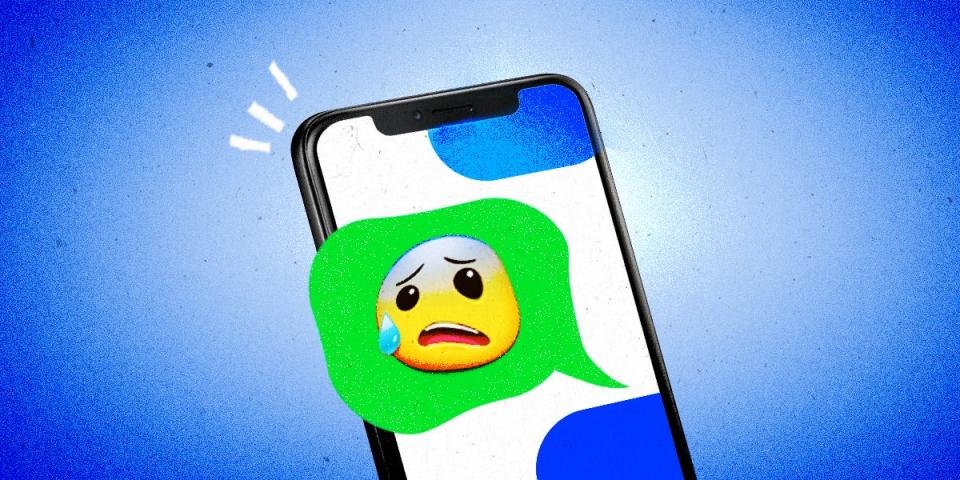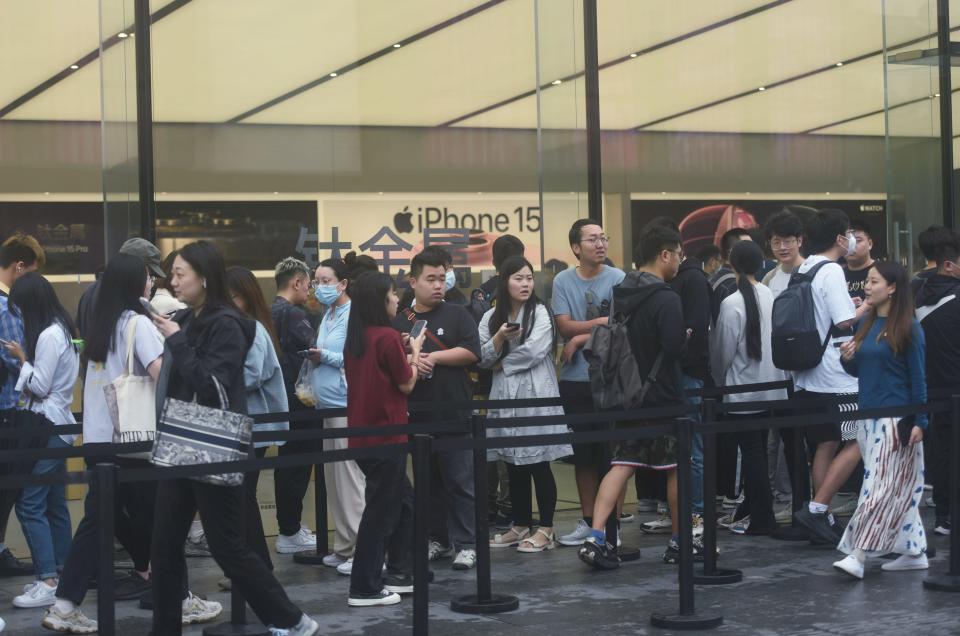How Apple tricks people into believing the iPhone is cool

It can be hard to keep up with what's "cool" in the tech world. Half the time, by the time you've figured it out, it's already passé. Or it's an Apple Vision Pro situation, where opinions vary on whether the device makes someone look cool or like a clown. One thing that is definitely not "cool," it seems, is having a green text bubble.
On Apple's iPhones, instead of conversations appearing in the typical gray and blue, text messages from non-Apple phones register as gray and a sort of hot green. Personally, I don't entirely get the fuss over the green-bubble question in text messages, but I know it's A Thing in American culture. A former coworker of mine has a whole rant about how on dating apps women would judge him for having an Android (well, that and living in New Jersey).
Anecdotes aside, this form of supposed cyberdiscrimination has even gotten the attention of the federal government. In its antitrust lawsuit against Apple alleging the tech giant has unfairly cornered the smartphone market, the Justice Department explicitly calls out the green-bubble issue. In the filing, it says people without Apple devices often feel a "social stigma, exclusion, and blame for 'breaking' chats where other participants own iPhones." The department claims that's on purpose — it alleges Apple takes all sorts of measures to maintain a monopoly on smartphones and keep developers and consumers within its grip, including making the messaging experience when communicating with non-iPhone users different and weird.
The ultimate reason that Apple causes friction with products it doesn't make is clear: to make money. What drives consumers, however, is worth pausing on. Sure, Apple has positioned the iPhone as the "cool" phone, but why do we care? What makes the blue iMessage bubbles the preferable color? Why do so many consumers see their buying habits as a sign of something bigger?
"Consumers really care about using products and brands to express who they are to themselves and the world around them," Nailya Ordabayeva, an associate professor of business administration at Dartmouth's Tuck School of Business, said. "Brands that have a really well-established image, Apple's cool image, for instance, that they worked on to establish over the years — consumers really see that as a legitimate signal of their own coolness to themselves and other people."
Apple has spent more than 15 years fostering an in-crowd/out-crowd scenario with the iPhone. The Cupertino, California, company has long cast itself as hyperinnovative and alluring, and the iPhone is the pinnacle of those efforts. Steve Jobs called the device a "revolutionary and magical" product when he introduced it in 2007, setting the tone for an aura that has persisted even as many other trendy products have cycled through. The iPhone keeps with Apple's minimalistic, sleek design philosophy and stays within a production process the company has tight control over. An Android device can look like anything and be from anyone — Samsung, Google, Motorola. There's only one iPhone, and there's no real cheaper version of it, either.
Apple reinforces the design allure of the iPhone by generating excitement every time a new product comes out. Every announcement of a new iteration, no matter how small the changes are, is treated like a holy event. The image of people lined up outside the Apple Store on the day of an iPhone launch is implanted in our collective imagination. Apple won't let bad guys in movies have iPhones, lest anyone get the wrong idea. And if you've ever watched "Ted Lasso" or anything else on Apple TV+, you've perhaps noticed iPhones and Apple products are ubiquitous.
By elevating the iPhone to the status of a prestige item, like a Louis Vuitton bag or a Mercedes car, Apple can play on consumers' desire to "keep up with the Joneses," to try to emulate those around them and not be left behind. People have a tendency toward conformity; we want to feel like we belong. That's especially pertinent for teens and young adults. They don't want to appear out of the loop or of lower status, like their families can't afford a higher-priced item.
"They're at a stage where they're trying to formulate their identity, and when you're trying to formulate your identity, you also figure out which social groups do you belong to, in which are you an insider and which are you an outsider," Joseph Nunes, a marketing professor at the USC Marshall School of Business, said. "And we all know that in the teenage years, being an insider, being left out, this really matters even more."

This drive doesn't end in adulthood; it just shifts. Maybe a 30-something doesn't care about which phone they have (though many still do), but they do care about which car they drive and where their kids go to school. And they're probably still holding on to their iPhones, however they do or don't think it makes them look, because they're used to them. They're already in too deep, and the switching cost feels too high — especially if all their other devices are Apple.
Humans are a hierarchical species. We look down to feel better about ourselves and look up to gauge where we stand on the scale. People seek ways to signal status in that social comparison setting, and having a supposedly attractive or special thing is a way to accomplish that. It's a form of "conspicuous consumption," a way to display your standing and wealth.
"Consumers who seek approval of others or are motivated by social dominance engage in conspicuous consumption to showcase their elitism to others," Joshua Clarkson, a consumer psychologist and marketing professor at the University of Cincinnati, told me in an email. "You could imagine both of these groups of consumers being heavily vested in iMessage (i.e., to not be the person with the Android on the group chat) as either a way to fit in (if seeking others' approval) or a way to exclude others (if driven by social dominance)."
Some brands are good at playing into these predispositions. Luxury and prestige companies say their products are of higher quality, which is often true. But the functional attributes are reinforced by aspirational positioning — you can't just make something of a higher quality; you have to make people think it's worth more. That positioning allows companies to price their premium-perceived products accordingly. They advertise them with influencers and celebrities who align with their image. They often inject a sense of scarcity and urgency into the mix. While iPhones are ubiquitous, the latest versions, which also come with a new price point, are not.
The societal context matters here, too, Nunes said: "We're in a period of society today that's got great inequality. And then that sort of reinforces this notion that there are the haves and the have-nots."
There's nothing wrong with wanting an iPhone. In a world where some people are constantly seeking out prestige and status through their consumption, it would be stranger if there weren't some drive to have whichever phone is perceived as the best. And consumers are clearly picking up what Apple is putting down — at a nearly $3 trillion market cap, it's one of the most valuable companies in the world. But it's important to remember that having whatever the fancy thing is, ultimately, doesn't make us happier. Sometimes, it even makes us more judgmental, hence the whole green-bubble bias.
We see the things we have as an extension of ourselves, perhaps especially our phones — it's where many people live a lot of their lives. iPhone bias probably isn't going anywhere, even if we're unaware of it.
"Brands are more than just the functional products that they offer, that they are this symbol of who consumers want to see themselves as and who they want to be," Ordabayeva said. Apparently, a lot of us want to see ourselves as iPhone users and all that comes with it. I switched from a Samsung to an iPhone in 2014. It just seemed like the thing to do, which is what Apple is banking on.
Emily Stewart is a senior correspondent at Business Insider, writing about business and the economy.
Read the original article on Business Insider

 Yahoo Sports
Yahoo Sports 
